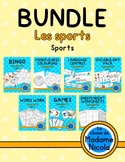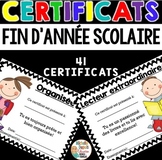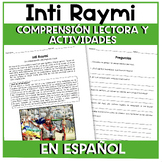204 results
Astronomy scaffolded notes for Microsoft Word en francais
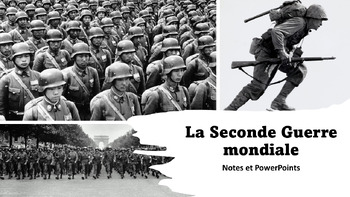
La Seconde (Deuxième) Guerre mondiale - Notes
Une série de notes sur la participation du Canada à la Seconde Guerre mondiale. Chaque leçon inclut un PowerPoint avec une fiche de notes lacunaire accompagnante. Les fiches de notes incluent aussi des questions de réflexion qui encouragent la pensée critique. Le paquet inclut les thèmes suivants:Le totalitarismeLes Causes de la guerreLe Canada entre en guerreLes événements importantes de la Seconde Guerre mondiale (la guerre éclair, l'évacuation de Dunkerque, la bataille d'Angleterre, la batail
Subjects:
Grades:
10th - 12th
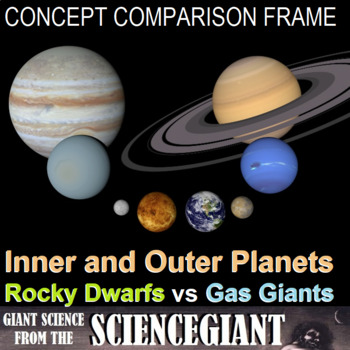
Concept Compare: The Inner and Outer Planets (rocky dwarf vs. gas giant)
How are the other planets of our solar system different from Earth? This Concept Comparison Frame helps students contrast the Inner and Outer Planets, with the terrestrial rocky dwarfs of Mercury, Venus, Earth and Mars on the one side, and jovian gas giants of Jupiter, Saturn, Uranus, and Neptune on the other. The Concept Comparison Routine is used help compare and contrast key concepts. Specifically, students use like and unlike characteristics and categories shared and not shared by two or mor
Subjects:
Grades:
6th - 12th
NGSS:
MS-ESS1-3
Also included in: StayGiant Earth Science Bundle: Astronomy (space exploration)
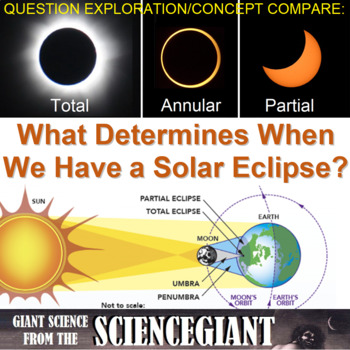
Concept Compare and Question Explore: Solar Eclipse on January 14, 2029
Why do eclipses happen? Why doesn't every new moon result in a solar eclipse? This question exploration helps students explain What determines when do we have a solar eclipse? It also includes: a concept comparison of three solar eclipses visible in the United States: a partial eclipse on Wednesday, January 26, 2028 and Sunday, January 14, 2029; an annular eclipse on Thursday, June 11, 2048; and a total solar eclipse of Wednesday, March 30, 2033 (only visible in Alaska. For the lower 48 states,
Subjects:
Grades:
7th - 10th
NGSS:
HS-ESS1-4
, MS-ESS1-1
Also included in: StayGiant Earth Science Bundle: Astronomy (space exploration)
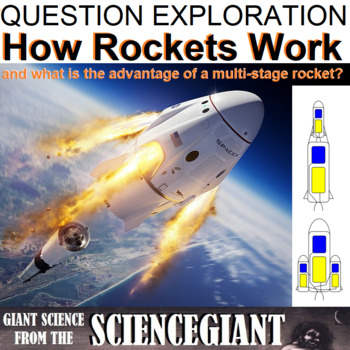
Question Exploration and Lab: How Do Rockets Work?
How Do Rockets Work? This Question Exploration helps Ss explain how Does a Rocket Work, and What is the Main Advantage of a Multi-stage Rocket?Question Exploration Routine is an instructional methods that teachers can use to help a diverse student population understand a body of content information by carefully answering a critical question to arrive at a main idea answer. Students taught using the Content Enhancement routines earned higher total test scores than did students taught using the le
Subjects:
Grades:
6th - 10th
NGSS:
HS-ETS1-2
, HS-ETS1-3
, MS-ETS1-1

Concept Compare: Kepler's (and Newton's) Laws of Planetary Motion for Orbits
This concept comparison is between: Kepler's Laws of Planetary Motion, and how they relate to Newton's Laws of Motion and the Law of Universal Gravitation. Bring a calculator!The Concept Comparison Routine is used help compare and contrast key concepts. Specifically, students use like and unlike characteristics and categories shared and not shared by two or more concepts to better understand the overall concept. Students taught using the Content Enhancement routines earned higher total test scor
Subjects:
Grades:
7th - 12th, Higher Education
NGSS:
HS-ESS1-4
Also included in: StayGiant Earth Science Bundle: Astronomy (space exploration)
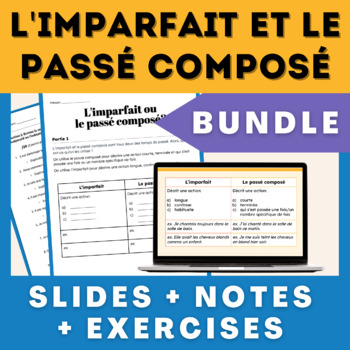
Imparfait ou passé composé? Mini-Bundle
Looking for easy-to-follow resources for teaching the French imparfait? This mini-bundle includes lesson slides, student notes and exercises. It is editable, Google Drive compatible and can be used in-person or online! The first lesson is on the imparfait - what it is, how to conjugate it and when to use it. The second lesson dives into more detail on when to use the imparfait vs the passé composé.Who is this for?✓ Students learning the imparfait for the first time or reviewing it✓ Students fami
Subjects:
Grades:
9th - 12th
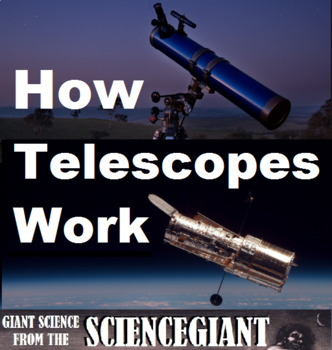
Concept Compare: Great Galileo! How Telescopes Work (refractor,reflector,radio)
What are telescopes and how do they work? This Question Exploration helps Ss explain how do different types of telescopes work. The Concept Comparison contrasts refracting, reflecting and radio telescopes. And there is a Frame reviewing the astronomical accomplishments of the first champion of telescopes -- Galileo Galilei. Magnifico!Framing Routines and Question Exploration Routines are instructional methods that teachers can use to help a diverse student population understand a body of content
Subjects:
Grades:
7th - 10th
NGSS:
HS-PS4-5
, MS-PS4-2
, HS-PS4-1
Also included in: StayGiant Physics Bundle: Optics

Question Exploration: What Causes Seasons and the Solstices?
What Causes Seasons and Solstices? This question exploration helps students explain how the Earth has seasons because its axis is tilted. Earth rotates on its axis as it orbits the Sun, but the axis always points in the same direction, creating a North Pole!The resource also includes reading excepts:"The Measure of Eratosthenes" by Carl Sagan. From the first episode of Cosmos, Sagan easily proved the Earth was a sphere using the summer solstice, the shadows of some sticks, a piece of cardboard,
Subjects:
Grades:
7th - 12th
NGSS:
HS-ESS2-4
, MS-ESS2-6
, MS-ESS1-1
Also included in: StayGiant Earth Science Bundle: Astronomy (space exploration)

Total Solar Eclipse Explanation Guided Notes/Handout - Middle or High School
One of the most amazing astronomical relationships is that the sun and moon appear the same size in the sky, allowing for a spectacular total solar eclipse where the invisible new moon reveals itself and perfectly covers the sun in the mid-day sky. This can be explained to students mathematically in relatively simple terms, along with understanding the mechanics of how a solar eclipse comes to be though the use of this handout.This is a guided handout from my Astronomy Unit Plan (also available
Subjects:
Grades:
6th - 9th
CCSS:
NGSS:
MS-ESS1-3
, MS-ESS1-1

The Milky Way Galaxy Fill in the Blank Guided Notes w/Answer Key EDITABLE
Fill in the Blank Guided Notes focused on the Milky Way Galaxy Lesson in Earth Science. See Thumbnails for more details. Simply purchase, download and copy!To be paired with FREE Slide ShowFill in the blank questions to keep students engaged.Unlike other teacher's resources, this is totally editable!**Answer Key Included**Check out these other products made for this lesson!Slide Show PresentationGuided NotesVocabulary WorksheetResearch Prompt WorksheetLesson Quiz5E Lesson PlanBe sure to check ou
Subjects:
Grades:
6th - 12th
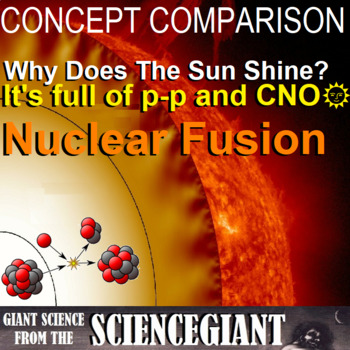
Concept Compare: Why Does the Sun Shine? Thermonuclear Fusion! (p-p and CNO)
This Concept Comparison of Thermonuclear Fusion contrasts proton-proton (p-p) chain reactions, and the "cold" carbon-nitrogen-oxygen (CNO) cycles. Help Ss communicate scientific ideas about the way stars produce elements over their life cycle. Emphasis is on the way nucleosynthesis, and therefore the different elements created, varies as a function of the mass of a star and the stage of its lifetime. As cosmologist Carl Sagan famously said, “We are made of star stuff.” And we literally are! We a
Subjects:
Grades:
8th - 12th, Higher Education
NGSS:
HS-PS1-8
, HS-ESS1-3
, HS-ESS1-1
Also included in: StayGiant Earth Science Bundle: Astronomy (space exploration)

Question Exploration: What Are the Solar Activity Sunspot Cycles?
What are the solar activity sunspot cycles? Sunspots increase and decrease through an average cycle of 11 years. This Question Exploration helps Ss explain how the spotless Sun turns dark, releasing solar flares and coronal mass ejections (CMEs).Question Exploration Routine is an instructional methods that teachers can use to help a diverse student population understand a body of content information by carefully answering a critical question to arrive at a main idea answer. The Concept Comparis
Subjects:
Grades:
7th - 12th, Higher Education
Types:
NGSS:
HS-ESS1-1
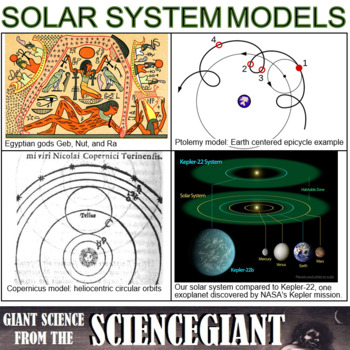
Concept Comparison and Question Exploration: Models of the Solar System
What are historical models of the solar system? This Question Exploration and Concept Comparison helps Ss contrast geocentric model painted in ancient temples, to heliocentric models photographed in modern telescopes. Question Exploration Routine is an instructional methods that teachers can use to help a diverse student population understand a body of content information by carefully answering a critical question to arrive at a main idea answer. Students taught using the question exploration r
Subjects:
Grades:
7th - 10th
NGSS:
HS-ESS1-4
, MS-PS2-4
, MS-ESS1-2
, HS-PS2-4
Also included in: StayGiant Earth Science Bundle: Astronomy (space exploration)

Phases of the Moon 5th Grade (Worksheet)
This worksheet is designed to help students retain information from the Moon Phases presentation posted on my storefront. This is meant to help them visualize phases of the Moon as well as the definitions related to each Moon phase.
Subjects:
Grades:
5th
Types:
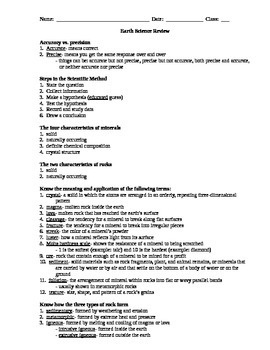
Earth Science final review sheet- geology, meteorology, hydrology, astronomy
INCLUDES THREE COPIES:
- Pages 1-11 are the answers
- Pages 12-22 are the outlines for students to fill in
- Pages 23-35 are a modified/shortened outline for students with disabilities
This is a compilation of all of the review sheets I use throughout the year (shortened a bit to leave just the bare bones needed to understand the standards). I follow the Georgia Performance Standards, 6th grade, science, which includes geology, hydrology, meteorology and astronomy.
Subjects:
Grades:
6th - 8th
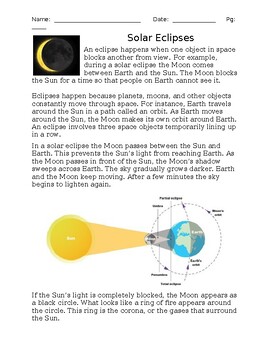
Read to Learn -Solar Eclipses - Introductory Earth Science and Astronomy
This reading introduces students to solar eclipses and mentions the total solar eclipse occurring on 8 April 2024. Students are provided short paragraphs about solar eclipses and are provided models to aid their understanding. Ample space is provided to allow students to interact with the text by circling / boxing / underlining key ideas. One suggestion for use is to provide students sticky notes to practice asking a question for each paragraph. The question should then be answered by readi
Subjects:
Grades:
5th - 8th
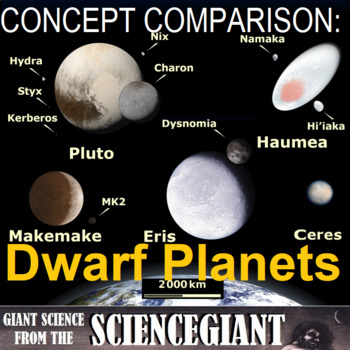
Concept Comparison: Dwarf Planets (Ceres, Pluto, Huamea, Eris, and Makemake)
This Concept Comparison Frame contrasts the dwarf planets CPHEM (Ceres, Pluto, Huamea, Eris, and Makemake). These round worlds orbit the Sun but didn't completely clear their neighborhood (one is in the asteroid belt and the rest are in the Kuiper Belt). It helps Ss explain how these rocky and icy minor planets are just as important to understanding the solar system as gas giants. The Concept Comparison Routine is used help compare and contrast key concepts. Specifically, students use like and u
Subjects:
Grades:
6th - 12th
NGSS:
HS-ESS1-4
, MS-ESS1-3
Also included in: StayGiant Earth Science Bundle: Astronomy (space exploration)
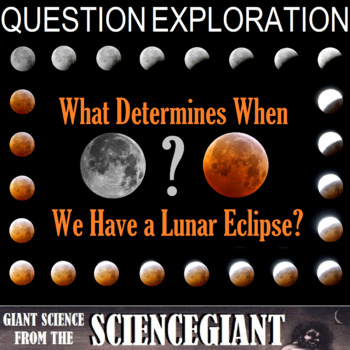
Concept Compare and Question Explore: Lunar Eclipse of 14 March 2025
Why doesn't every full moon result in a lunar eclipse? This question exploration helps Ss explain what determines when the Moon will be eclipsed, as on Friday, March 14, 2025 at 3 AM Eastern? Resource also includes a concept comparison of solar and lunar eclipses; and types of eclipses (total, partial, penumbral (lunar), and annular (solar). Actitivies and assessments for this resource include:a whole class formation activity to make a human model of a lunar eclipse, a math activity to make an u
Subjects:
Grades:
5th - 12th
NGSS:
HS-ESS1-4
, MS-ESS1-1
Also included in: StayGiant Earth Science Bundle: Astronomy (space exploration)

Question Explore: What Methods Measure Ultra Space Deep Distances? Parallax
This Question Exploration asks the Essential Question about cosmic distances: What Methods Do Astronomers Use to Measure Ultra Deep Space Distances? (from radar and parallax, to standard candles and Tully-Fisher Relationship used to measure distances to galaxies).Included are two activities on the scale of the universe for student assessment to be used as a warm up or after class review. The first is a classroom formation line-up, the other is a two-inch universe modeling about scale and ratios.
Subjects:
Grades:
7th - 11th, Higher Education
NGSS:
5-ESS1-1
, MS-ESS1-2
Also included in: StayGiant Earth Science Bundle: Astronomy (space exploration)
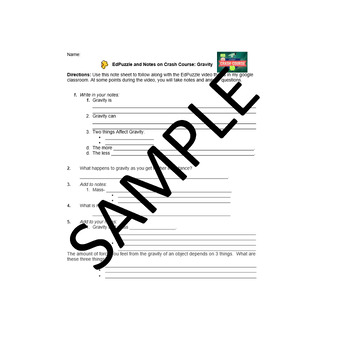
Crash Course Gravity EdPuzzle Note Sheet
· This note sheet is great to use as a warm-up, quick notes, or self-paced with a substitute. · This note sheet only covers the first 4 minutes of the Crash Course Gravity Video. After that point he gets more advanced than my 7th grade students need. Here is the link to my EdPuzzle Lesson that goes with these notes. The EdPuzzle will prompt them to write notes and fill in answers to the questions as they watch.
Subjects:
Grades:
6th - 8th
Types:
NGSS:
MS-ESS1-2
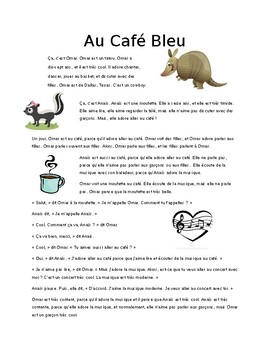
Au cafe bleu: Reading Activity (Bien Dit 1 Ch 2)
This short story uses repetitive vocabulary (drawn from Bien Dit Level 1 Ch 2) to help students find meaning based on context clues. There is also a short explanation of the contractions au and aux, as well as a re-telling activity.
Subjects:
Grades:
6th - 12th
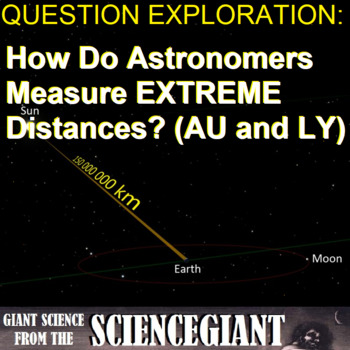
Question Exploration: How Do Astronomers Measure Extreme Distances? (AU and LY)
This Question Exploration asks the Essential Question about cosmic distances: How Do Astronomers Measure Extreme Distances? (astronomical units and light years )Question Exploration Routine is an instructional methods that teachers can use to help a diverse student population understand a body of content information by carefully answering a critical question to arrive at a main idea answer. Students taught using the question exploration routine earned higher total test scores than did students t
Subjects:
Grades:
7th - 10th
Also included in: StayGiant Earth Science Bundle: Astronomy (space exploration)
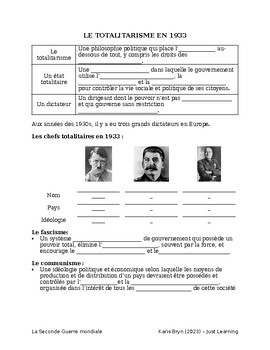
Le totalitarisme - Notes et activité individuelle de recherche
Cette leçon complète inclut:Une fiche lacunaire de notes sur le totalitarisme, incluant une intro à Hitler, Staline et Mussolini et les définitions du fascisme et communisme. Une activité individuelle où les élèves utilisent de différentes sources secondaires pour répondre à la question "Comment Hitler a-t-il pu prendre autant de pouvoir avant la Seconde Guerre mondiale?" La fiche inclut différentes catégories pour guider les élèves dans leurs recherches. Une version prof des fiches, incluant le
Subjects:
Grades:
9th - 11th
Types:

Question Exploration: What Determines the Life Span of a Star?
When Will the Sun Burn Out? Will the Sun ever blow up and kill us all? This Question Exploration helps Ss answer the Essential Question: What Determines the Life Span of a Star like the Sun?Question Exploration Routine is an instructional methods that teachers can use to help a diverse student population understand a body of content information by carefully answering a critical question to arrive at a main idea answer. The Concept Comparison Routine is used help compare and contrast key concepts
Subjects:
Grades:
7th - 10th
NGSS:
MS-ESS1-4
, HS-ESS1-3
, HS-ESS1-1
Also included in: StayGiant Earth Science Bundle: Astronomy (space exploration)
Showing 1-24 of 204 results

